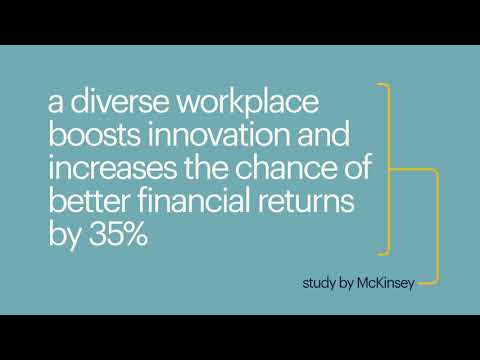flexible staffing
Companies worldwide are transforming their staffing practices to meet the evolving challenges of today’s global economy. HR leaders and hiring managers are optimizing talent acquisition using flexible staffing solutions.
In 2020, 76% of human capital leaders used flexible staffing solutions to build a more resilient workforce. Business leaders are discovering that the ideal staffing strategy includes a balance of permanent hires and temporary hires. Working with an HR services firm to optimize use of internal resources can help.
It’s time to reimagine your own staffing strategy. Here you can find everything you need to know about flexible staffing and how it can contribute to your company’s success.
download page as pdfwhat is flexible staffing?
Flexible staffing is a strategy by which companies employ contingent workers. HR teams and other departments use a contingent workforce to meet evolving business and operational challenges and as an alternative to hiring permanent employees. Contingent workers are not on a company’s payroll—they are contractors, independent freelancers, gig workers, and agency-provided workers.
Companies use flexible staffing for a variety of reasons, such as:
- filling a temporary talent gap, such as when a permanent employee is on maternity leave
- meeting a temporary surge in labor demand (e.g., seasonal work)
- trialing contingent workers as potential permanent hires
- supporting one’s small business in lieu of costly, full-time hires
- accessing top talent among workers that prefer to have a flexible schedule, such as parents and students
is a flexible staffing strategy right for your business?
learn what are the pros and cons of flexible staffingwhy do you need a flexible staffing strategy?
Preparing a flexible staffing strategy now gives your workforce the resiliency it needs to take on the unpredictable challenges of the future—without the time, effort, and costs associated with hiring new employees.
Thanks to the gig economy and the availability provided by remote work, there are more capable professionals and a wider variety of talent available than at any point in history. You too can take advantage of contingent workers, each with their own unique advantages and personal goals.
the issue with rigid staffing strategies
Identifying and acquiring the right talent remains one of the biggest challenges in modern business: 80% of CEOs worry about skills shortages, The Economist reports. Hiring a permanent employee is a considerable commitment in terms of finances, productivity, and time; companies lose money and productivity while positions remain unfilled as well.
As the global business climate becomes more unpredictable, skills gaps caused by major disruptions and lost employees can be devastating.

Most organizations will need to adapt their strategies and build new capabilities to be more responsive to changing conditions on the ground.”
'Most organizations will need to adapt their strategies and build new capabilities to be more responsive to changing conditions on the ground,' McKinsey describes in their Q4 2020 analysis of the temporary labor sourcing industry. Indeed, temporary labor—that is, flexible staffing—has fueled countless companies’ economic recovery following the disruptions of COVID-19 and beyond. As companies automate tasks once completed by skills workers—and release those employees from full-time employment—others can tap into this new talent availability and train them on processes as well.
leveraging flexible staffing to meet the challenges of the new normal
learn more on how to reshape your HR strategythe business opportunities of flexible staffing
Flexible staffing increases flexibility, optimizes costs, and accelerates the acquisition of much-needed talent when companies respond to changing business requirements and crises. With flexible staffing, companies can recalibrate their own workforce to effectively future-proof their business. The lasting benefits of a flexible staffing strategy include:
- gaining fast, affordable access to specialist skills
- paying only for the talent you need, when you need it
- increasing your edge over competitors with rigid staffing strategies
- trialing potential new hires to make sure you choose the right permanent employees
- transitioning your core staff from tedious day-to-day tasks to value-adding activities
- building relationships with workers and staffing agencies without permanent hires
- substituting unsuccessful workers with successful ones
- relieving core staff or temporarily replacing them when they must take leave
- collaborating with a staffing agency with experience, relationships, and in-depth market insights

One of the advantages of temporary and contract workers is that they can provide companies with greater flexibility in uncertain economic times.”
As McKinsey describes, 'One of the advantages of temporary and contract workers is that they can provide companies with greater flexibility in uncertain economic times.' As agility and workforce transformation grow in importance, employers are more likely to turn to flexible staffing solutions with these advantages in mind.
proven business benefits
Adopting a flexible staffing strategy does more than improve hiring and workforce management. Employing contingent workers as a policy builds resiliency and supports longevity for companies who can turn to their contingent staffing programs to solve new, recurring, and ongoing business challenges.

Organisations that included contingent workers in their total workforce strategy are better prepared to be adaptable in these constantly changing times. These organisations will also be better prepared moving forward, as organisations will need to be adaptable to cope with the cyclical labour swings that are to be expected."
According to Deloitte, organizations that include contingent workers in their workforce strategy have proven themselves well-positioned for the modern challenges of business. They are also better prepared than competitors to cope with the cyclical labor swings they will face in the future.
For example, senior leaders can quickly upscale or downscale their flexible staffing investments in real time as business opportunities and demands evolve. They can simplify their management of HR resources, visualizing flexible staffing solutions as a single cost center as well.
As business leaders’ relationships with contingent workers and HR services companies develop, they can cultivate a robust and well-managed contingent-talent community to support any variety of resourcing needs. But they must be both invested in that HR-partner relationship and willing to collaborate to succeed. This way, they can build familiarity within their talent pool, without hiring employees directly.
embracing remote work
In 2020, 'workplace teams increasingly demonstrated that they do not need the rigid structure of the traditional 9 to 5 hours in the office to deliver results,' SIA describes. 'The near-overnight shift to home or flexible working presented employers with new evidence that remote and contingent workforces can be hugely valuable to their business.'
The world has awakened to the benefits and advantages of remote work—not least of which is the elimination of geographical barriers to talent acquisition. Flexible staffing strategies that take advantage of remote work enable companies to reach the right talent, no matter workers’ locations.
In fact, 81% of companies leveraged temporary remote workers during the COVID-19 pandemic as the temporary labor market adjusted alongside other industries, McKinsey reports. Now staffing industry leaders agree that remote work will continue and 'contactless recruiting' will become more common.
Adapting one’s own recruiting, interviewing, hiring, and onboarding practices to remote workers is a challenging task. Flexible staffing means companies needn’t invest in traditional approaches to staffing when engaging workers in this area. Staffing agencies conduct much of the 'heavy lifting' in acquiring the right talent so that companies need not invest in remote-talent acquisition techniques themselves.
how to effectively manage a remote workforce
read about the most common mistakes of managing a remote teambuilding your flexible staffing strategy
Now that you recognize flexible staffing as an important asset in modern business, you can develop your own flexible staffing strategy to leverage its benefits. You can begin by identifying your own unique needs, then update your strategy for temporary labor to align with operations and business objectives.
Start creating your own internal team to review flexible staffing opportunities across your company. Identify where are your skills gaps, which roles can be filled with contingent workers, and which should remain permanent. Consider whether transitioning existing employees to a staffing agency’s payroll makes sense. Although you may only need flexible staffing for a single department, role, or process today, the relationships you build can contribute to needs in other parts of the company later as well.
how to get started with flexible staffing
Traditional hiring calls upon company stakeholders to identify, invest in, and build formal relationships with individual employees. With flexible staffing, the focus of the relationship shifts to a talent pool—for example, an assortment of freelancers and contractors. This pool may also include staffing agencies, which bring their own, already-vetted relationships with contingent workers to the bargaining table.
In this way, companies can approach flexible staffing relationships as a complete business solution, rather than approach individual relationships to fill individual roles within the company. With this approach in mind, stakeholders should ask themselves some key questions:
- How can flexible staffing help us fulfill the immediate talent needs of our company?
- How can flexible staffing contribute to our long-term business goals?
- How does flexible staffing help us reach talent we couldn’t reach otherwise?
- Which tasks are right for contingent or permanent workers—whether or not needs exist today?
- Which tasks can we outsource to increase the value of our own employees’ labor?
- To whom should we turn for contingent labor—freelancers, an agency, or others?
- What are the legal, financial, and HR requirements of maintaining a contingent workforce?
- How will we successfully manage ongoing relationships with contingent workers and agencies?
Even among companies prioritizing permanent hires, a flexible staffing strategy provides protection against talent shortages that could be disruptive or devastating. Building a flexible staffing strategy is as much about fulfilling specific talent needs as it is about protecting the company’s future with this in mind.
attracting and retaining contingent talent
Companies need to improve how they attract and retain contingent talent as it becomes more important to them. To begin, their HRl leaders must familiarize themselves with contingent workers’ unique needs. Although companies approach flexible staffing as a business solution, they are engaging a community of talented individuals seeking roles that will help them fulfill their own professional goals.
-
why do workers choose flexible roles?
Workers become temporary or contingent for a variety of reasons. Contingent work offers continuity for skilled professionals who have been laid off, for example; it provides talented graduates with professional experience at the start of their careers as well. Benefits contingent workers often seek out in a company include:
- opportunities to build relevant professional experience
- exposure to training and other staff benefits
- pathways to permanent positions
- referrals and recommendations from supervisors
- association with recognizable industry brands
- trying out different jobs to decide what they want in a career
- more time to travel, attend school, raise children, or care for family members
It’s sometimes difficult for companies to determine which talent is right for them, and how each worker’s motivations align with their own company goals. There are practical considerations and key steps you can take into account as you develop your own recruitment strategy to help you get started. Staffing agencies can help you get started as you build your understanding of the flexible staffing market, and build your own brand among contingent workers as well.
-
building your contingent talent brand
Although you may or may not build long-term relationships with individual contingent workers, you will build your own “contingent talent brand” based on the experiences and opportunities your company provides. As market demand for contingent talent grows, you should work on your brand to attract contingent workers.
Your internal team can optimize engagement with contingent talent and build its own talent community with the personal goals of those workers in mind:
- attracting contingent talent: Consider how your employee value proposition should change for a flexible workforce. For example, advertise training or growth opportunities as part of your contingent roles. Demonstrating that value is critical when enticing contingent workers to join.
- retaining contingent talent: Nurture your flexible staff to ensure they are open to future assignments. For example, make contingent workers’ professional development a strategic part of your initiative. Take time to understand their preferences and adapt your strategy accordingly.
Remember that flexible staffing is more than a means to end. For example, some industries are more unique than others in terms of what contingent workers typically look for in a company. A broad, common-sense approach that prioritizes the well-being of contingent workers is essential for long-term success.
a staffing agency can help
For decades, staffing agencies have helped companies fill labor shortages and even build relationships with successful full-time hires. Today’s staffing agencies have evolved to meet the modern needs of businesses with critical capabilities such as:
- connecting companies with talented workers, quickly and efficiently
- interviewing and vetting talent to the benefit of companies seeking them
- fulfilling formal requirements for recruitment process outsourcing (RPO)
- nurturing a tight-knit community of enthusiastic and capable workers
- optimizing staffing best practices for remote work environments
- scaling up staffing efforts while helping you plan your workforce efficiently
Staffing agencies have only grown in importance as economic uncertainties drive new business and labor requirements. Whether a company is downsizing or acquiring talent to take on new business challenges, staffing agencies can help.
-
what is a staffing agency?
Staffing agencies are labor consultants who have built close relationships and deep expertise in specific labor markets and industries. Larger staffing agencies span multiple sectors, often cultivating expertise from all of them to become a more holistic talent solution for their partners.
Companies rely on staffing agencies to remain proficient in labor and talent acquisition best practices, especially as labor markets become more complex. The right staffing agency is a strategic solution to its partners, but it can also be a collaborator and advisor providing market insights to the talented professionals it serves.
read more: 5 compelling benefits of working with an HR solutions partner
-
why choose a staffing agency?
Companies often attempt to manage flexible workers themselves by partnering with freelancers directly. This can be sufficient for short-term needs and in small volumes, but these relationships are often tenuous and difficult to both cultivate and maintain as they scale.
Staffing agencies have the knowledge and expertise to become a strategic solution for recruiting and managing companies’ contingent workforce on their behalf. Partnerships with staffing agencies, therefore, add strategic and operational value, where individually managed relationships do not.
working with randstad
Randstad is the world leader in the HR services industry. With 60 years of experience, our close professional relationships and expertise span multiple continents and industries. We provide unique and localized solutions to meet any companies’ contingent workforce needs—on small and large scales, for companies of all sizes. Our partners enjoy:
- flexible access to millions of candidates
- high-tech and people-powered solutions
- deep understanding of the industry’s latest best practices and trends
- a global presence, providing over 600,000 workers with employment every day
Randstad makes available its HR tech tools such as video interviewing, automated reference checking, and more to digitize key parts of your HR process; or, Randstad can manage your entire recruitment process end-to-end.
It’s time to begin building your own flexible team and to meet future uncertainty with the right talent assets at hand. Contact us today to find staffing solutions in your area or to discover what remote-work options are available to fit your needs.
flexible staffing FAQs
Traditional staffing involves the hiring of permanent employees. Companies offer them salaries and benefits so that they remain part of the company long term. Alternate staffing solutions include partnering with individual freelancers, partnering with contractors or vendors, and working with staffing agencies like Randstad. These methods allow companies to acquire talent without hiring permanent employees.
-
what is the difference between flexible staffing and recruitment?
Flexible staffing is the use of temporary, contingent workers to fill talent needs within a company. It does not require direct recruitment, hiring, administrative handling, and payrolling, which apply to permanent employees. Rather, flexible staffing involves a third-party partnership—with a staffing company, a contractor, a vendor, or a freelancer.
-
what are companies’ responsibilities to their contingent workers?
Unlike employees, most contingent workers do not receive salaries or benefits through the companies for whom they perform work. If those contingent workers are contractors or freelancers, the company pays them as they would vendors. If those contingent workers represent a staffing agency, companies pay the agency, which pays workers in turn with respect to local laws and wage requirements. Companies must provide workers with a safe, equitable, and constructive work environment.
-
how do I decide which type of staffing is right for me?
Whether you choose to partner with a staffing agency or work directly with freelancers or contractors yourself, the consultants at Randstad can help. Start a conversation with Randstad to connect with an HR professional and determine the right staffing solutions for you.
Contact us to learn more about how Randstad can help you with your flexible strategy. We are happy to support you.
latest updates
see all articles-
 03 April 2024
03 April 2024choosing the best work model for your business.
-
 03 April 2024
03 April 2024tips for managing a hybrid and remote workforce.
-
 02 April 2024
02 April 2024creating an employee well-being program: best practices.
-
 26 March 2024
26 March 2024employee wellness in high-pressure environments.
-
 19 March 2024
19 March 2024the state of workplace well-being across the globe.
-
 29 January 2024
29 January 2024how working with an HR solutions partner can help you cut labor costs.





